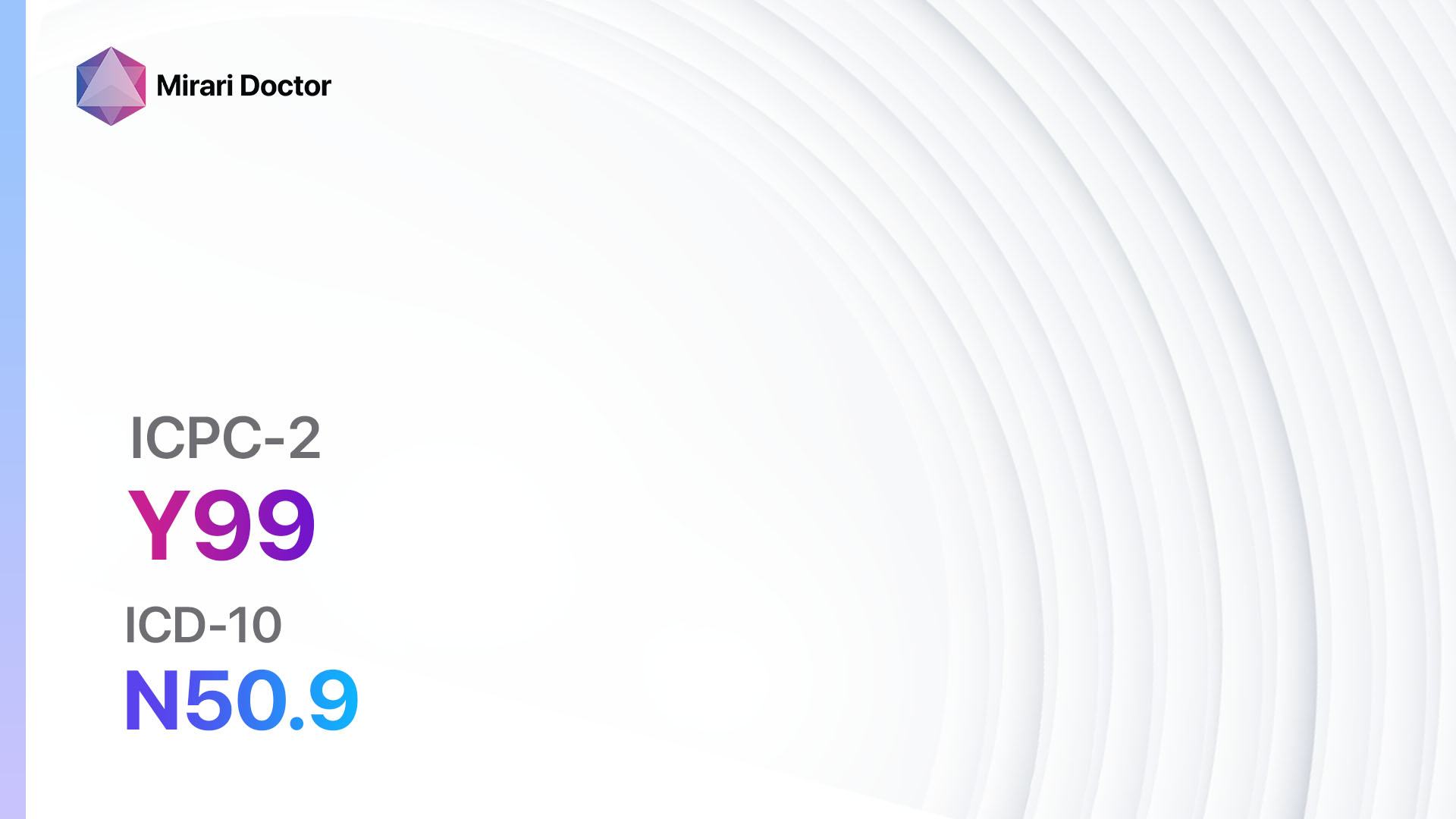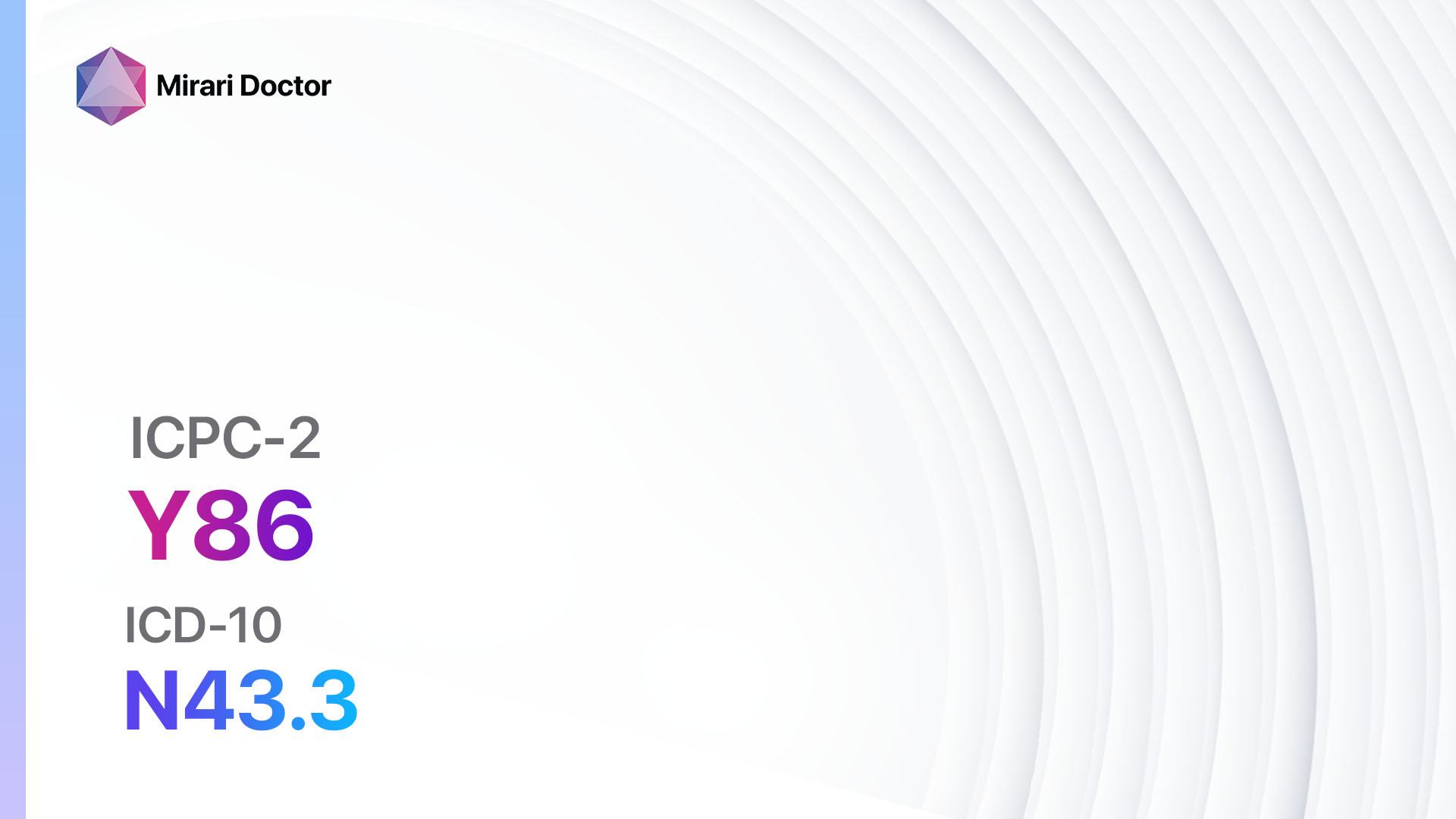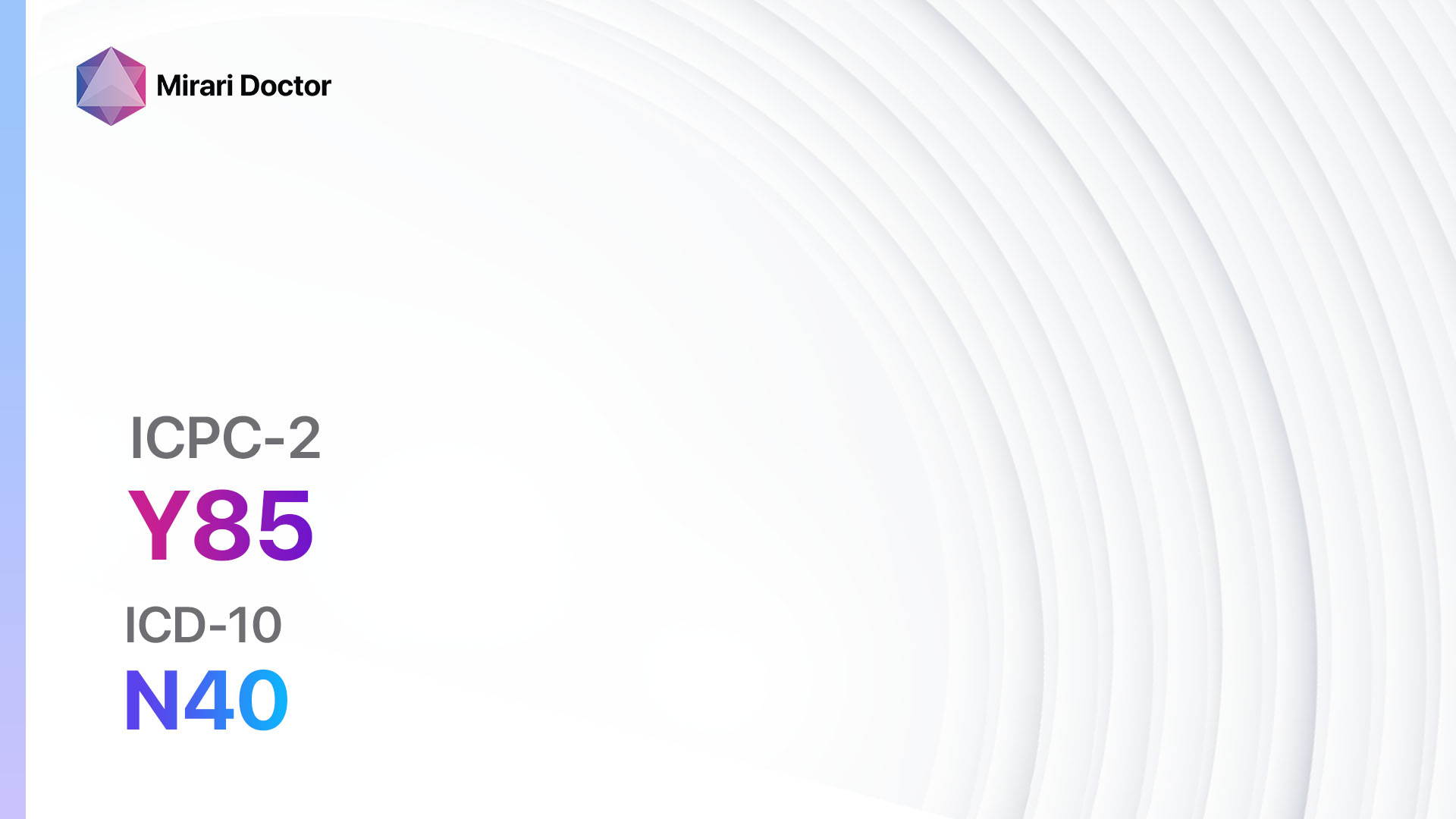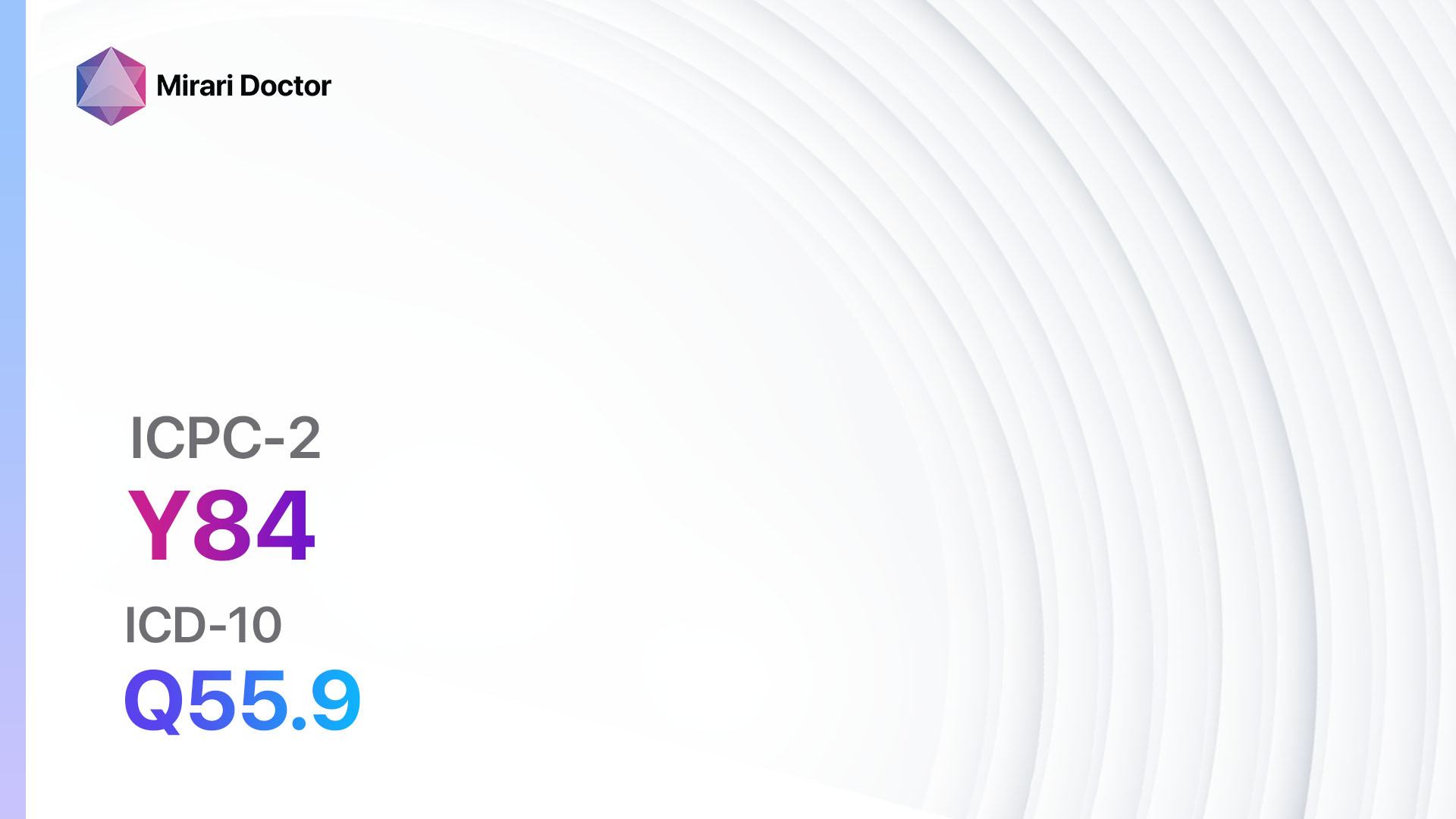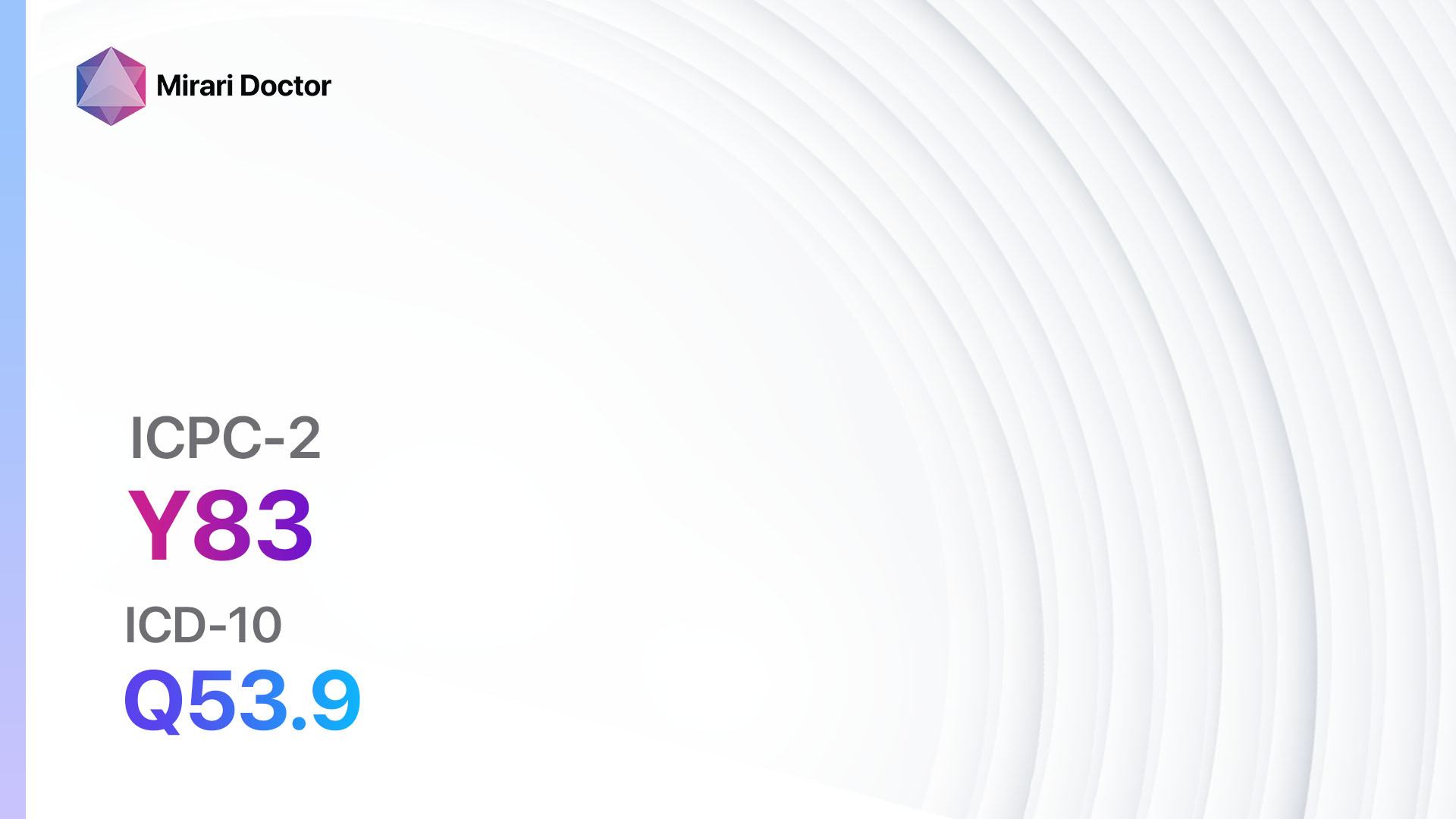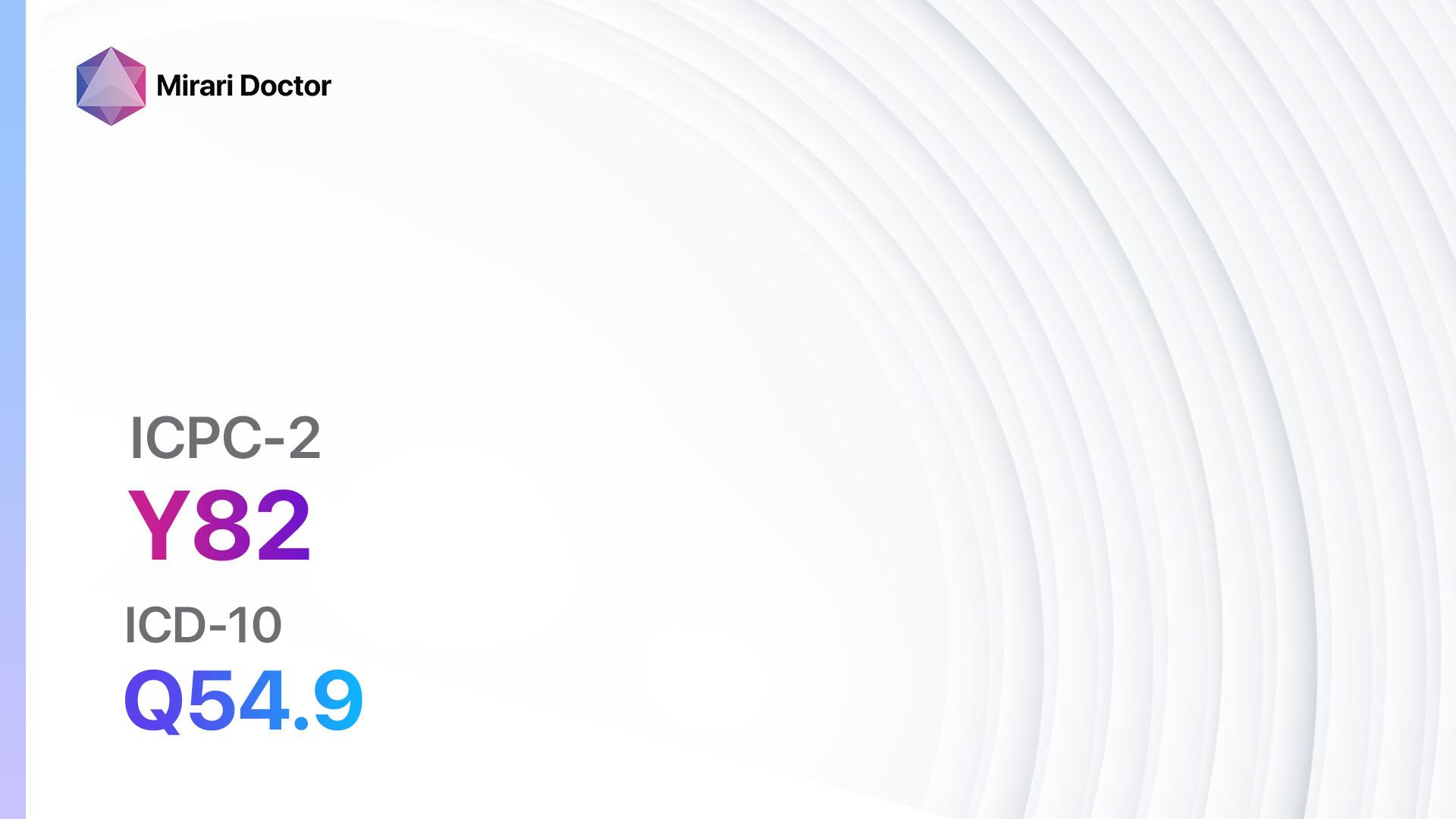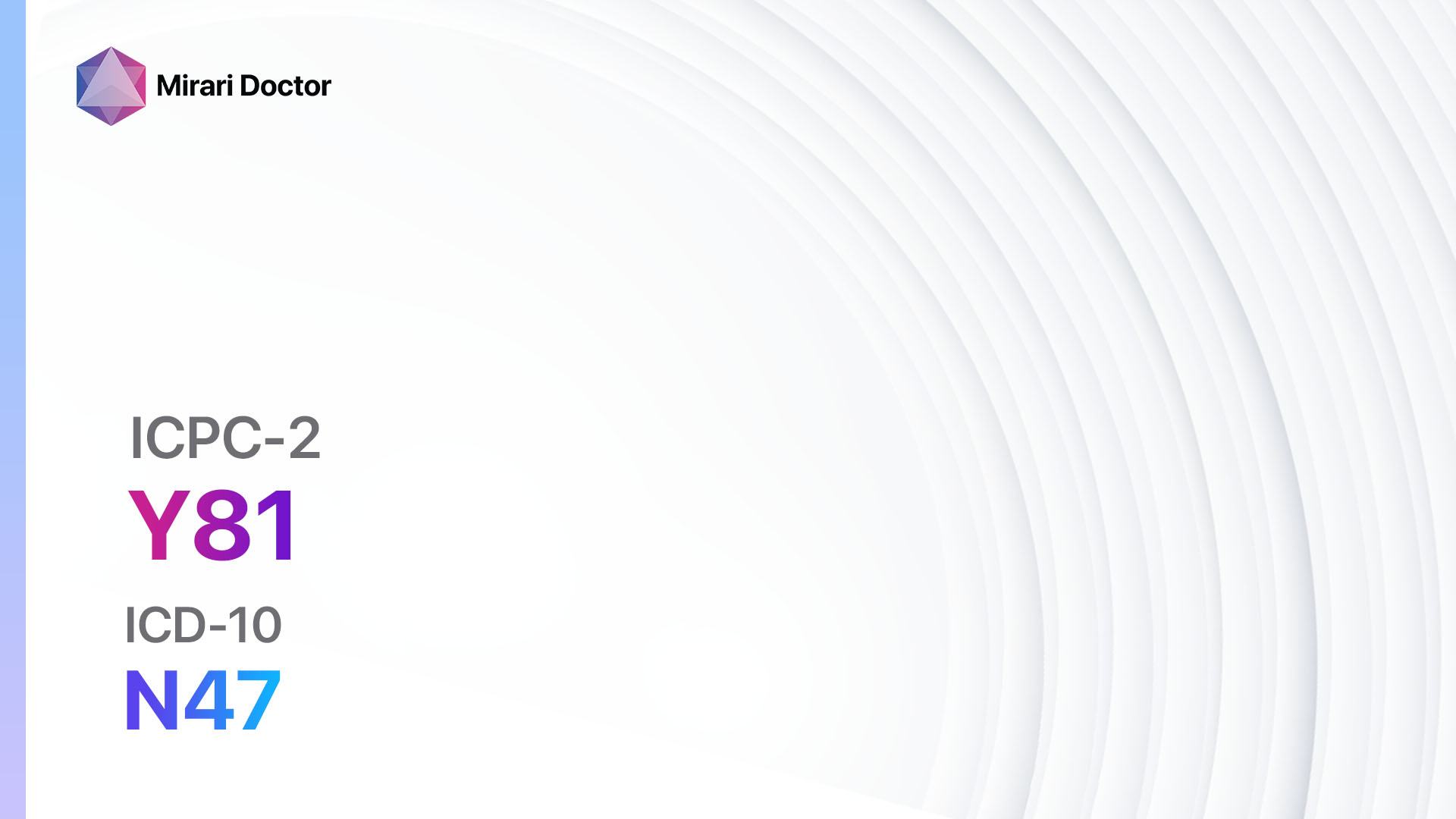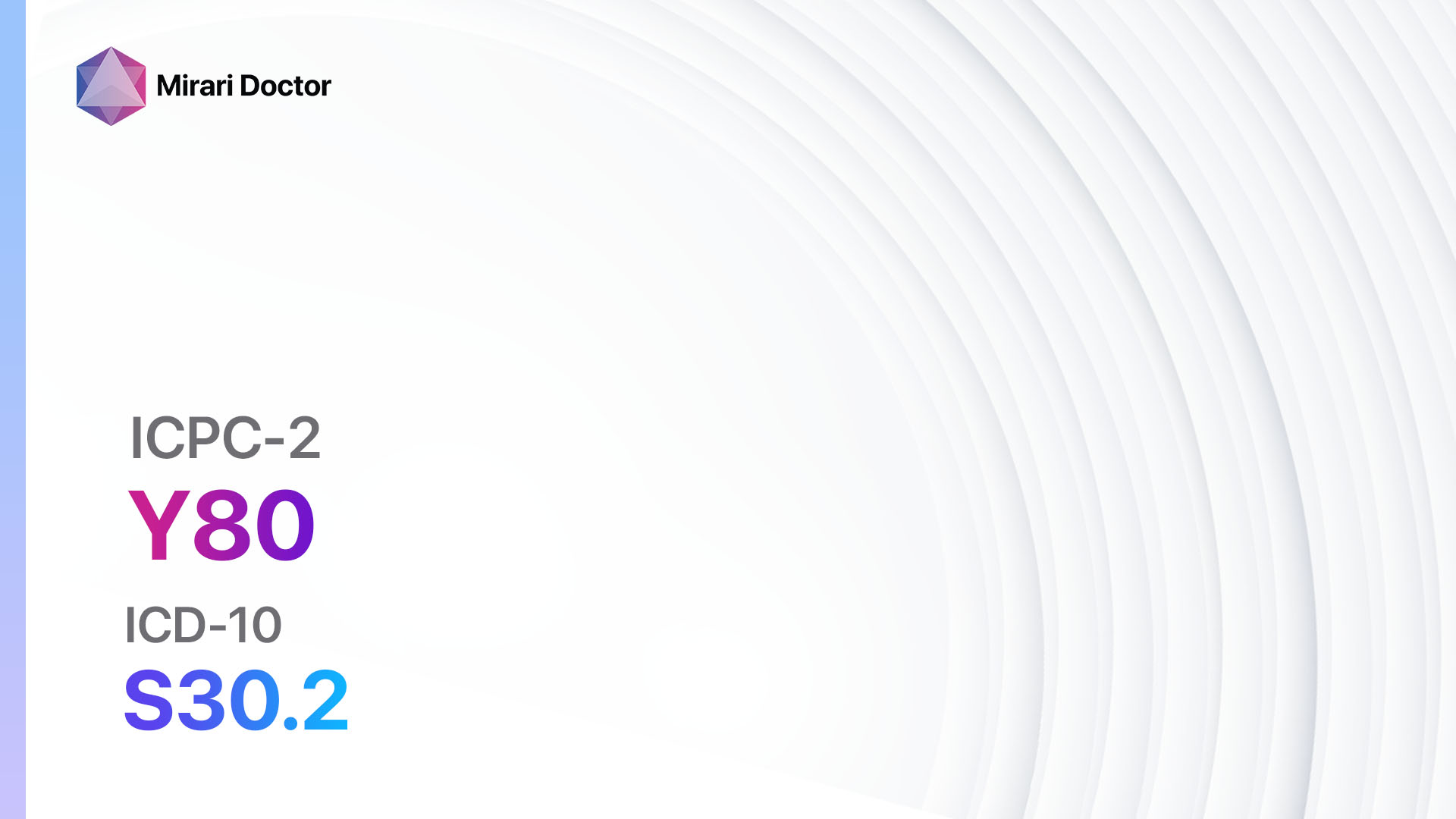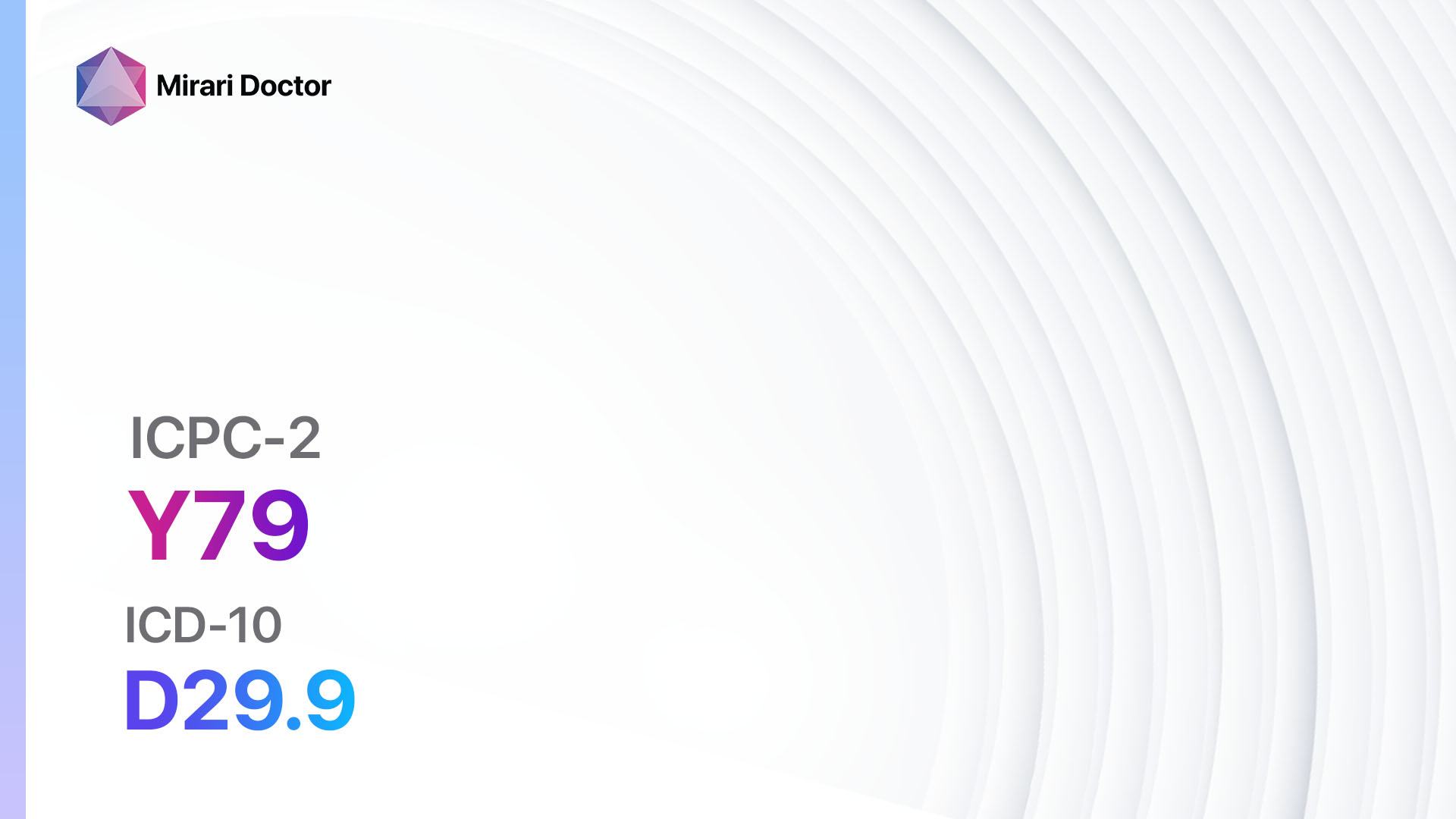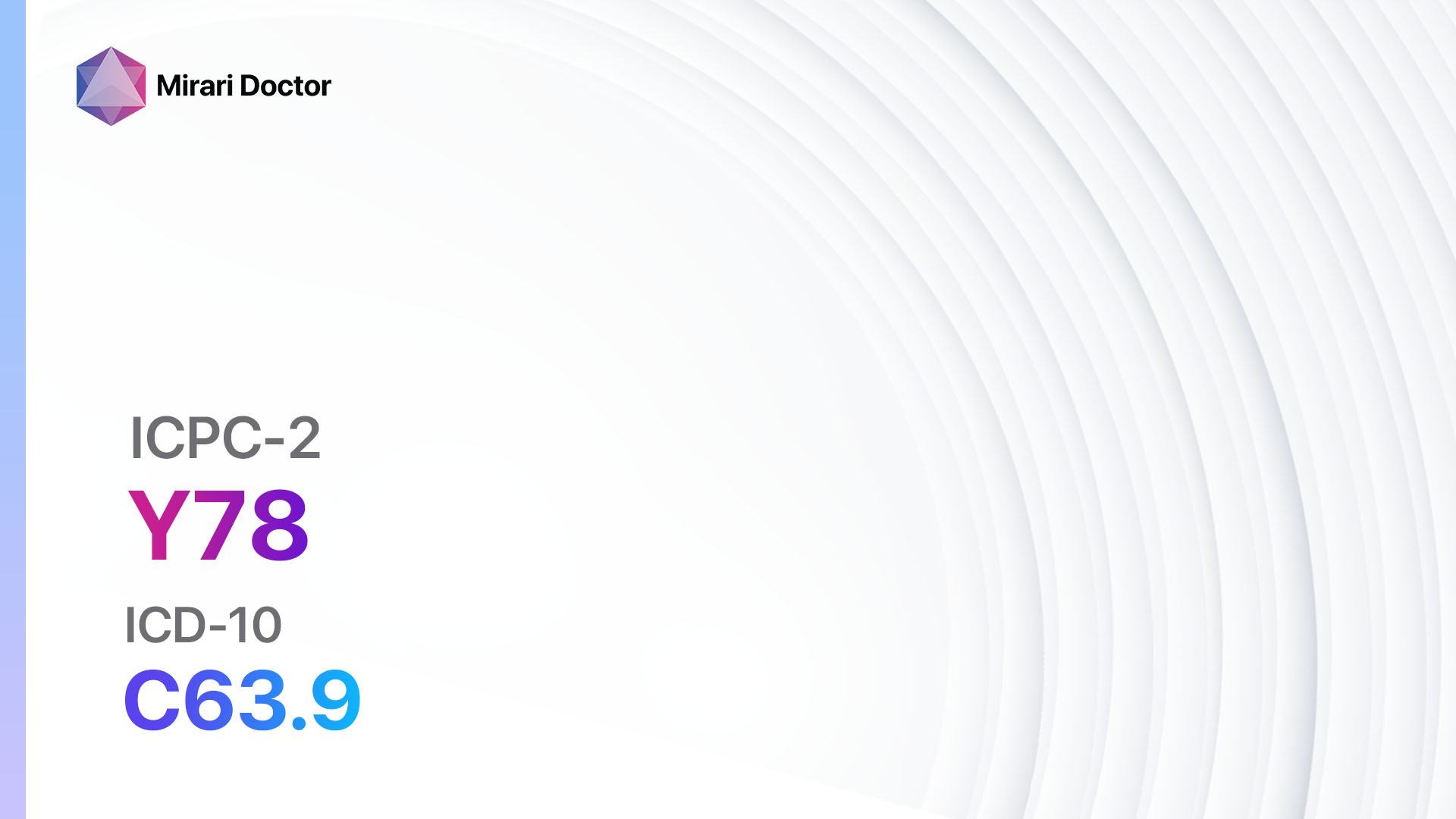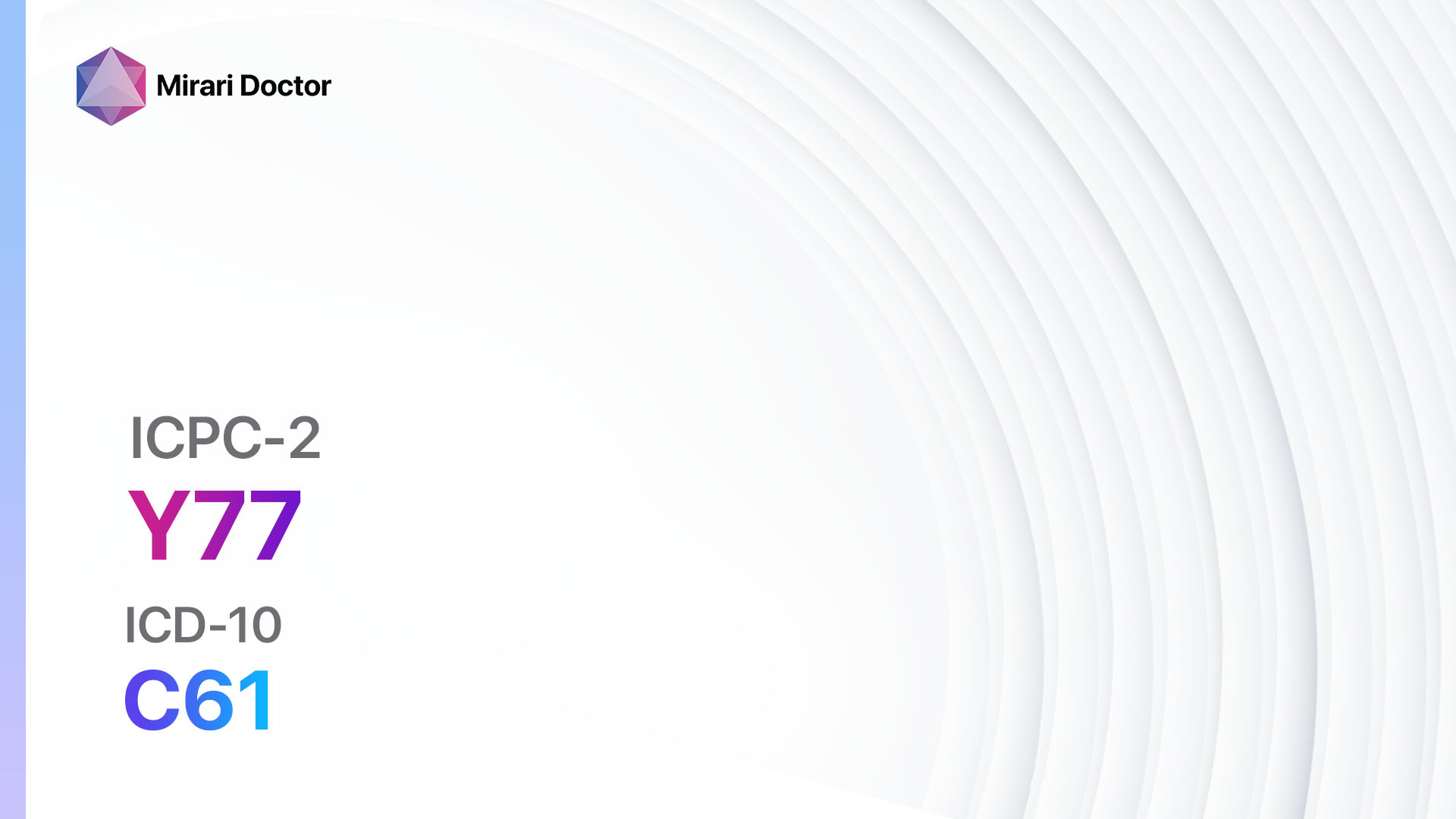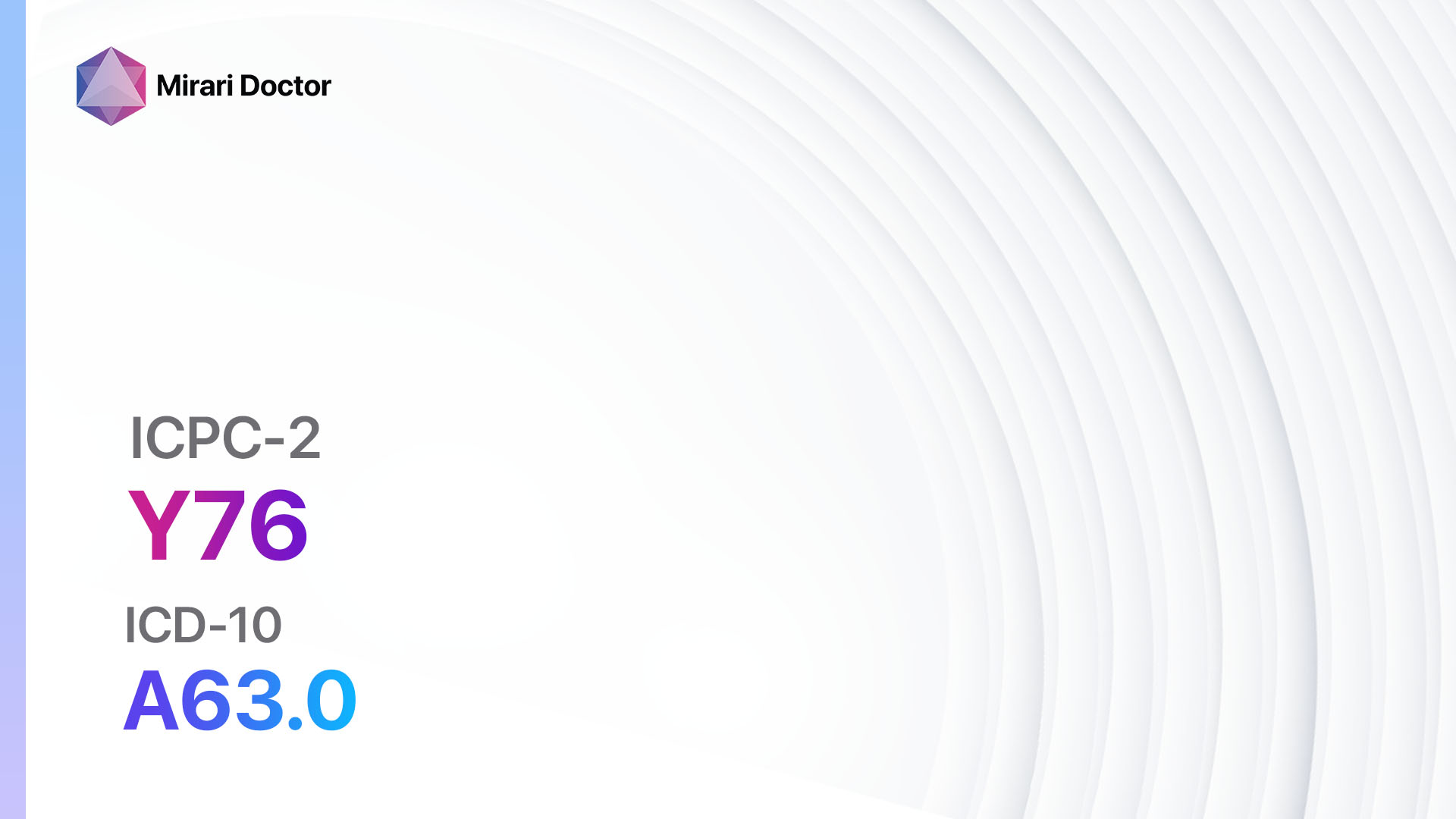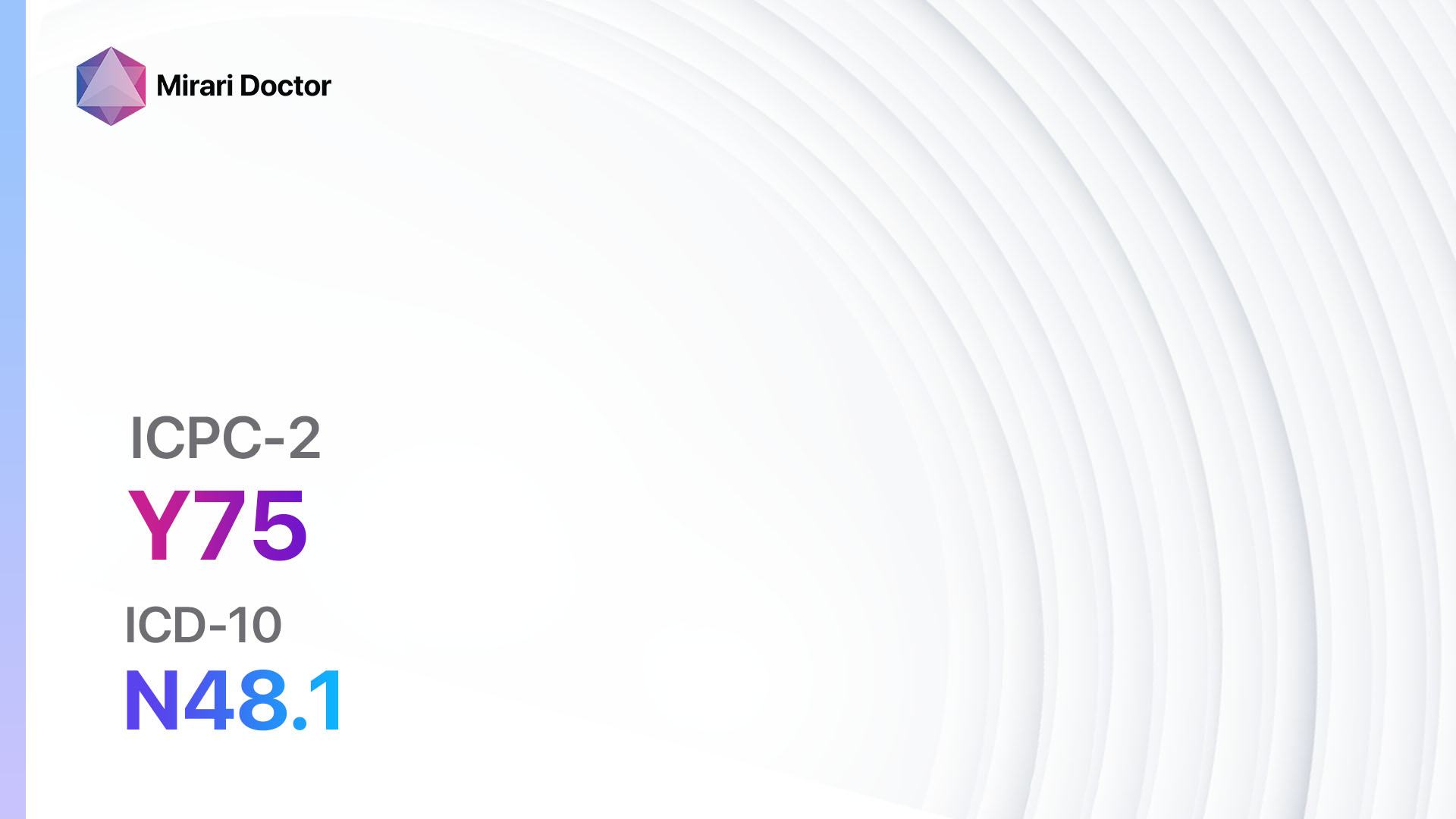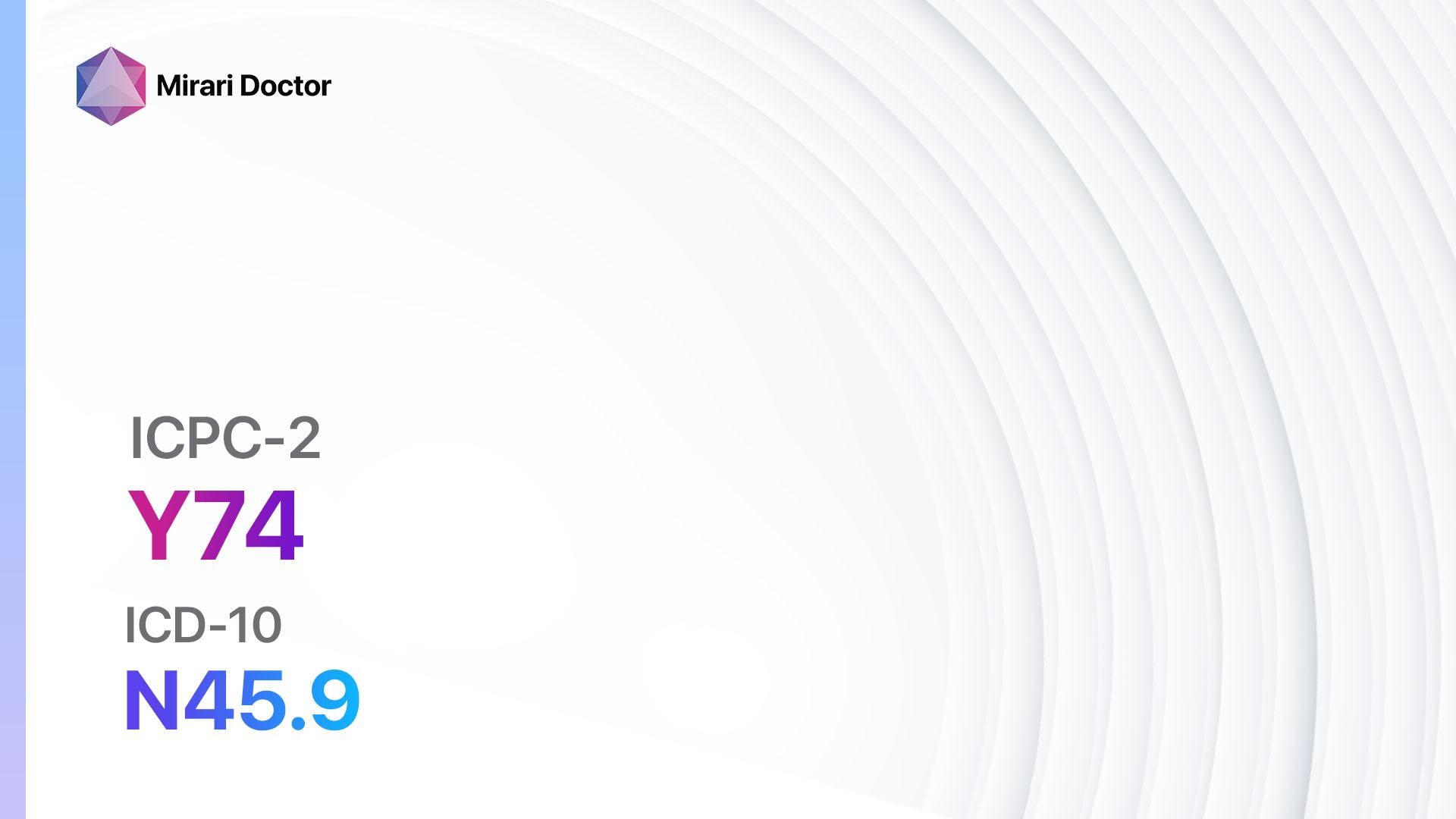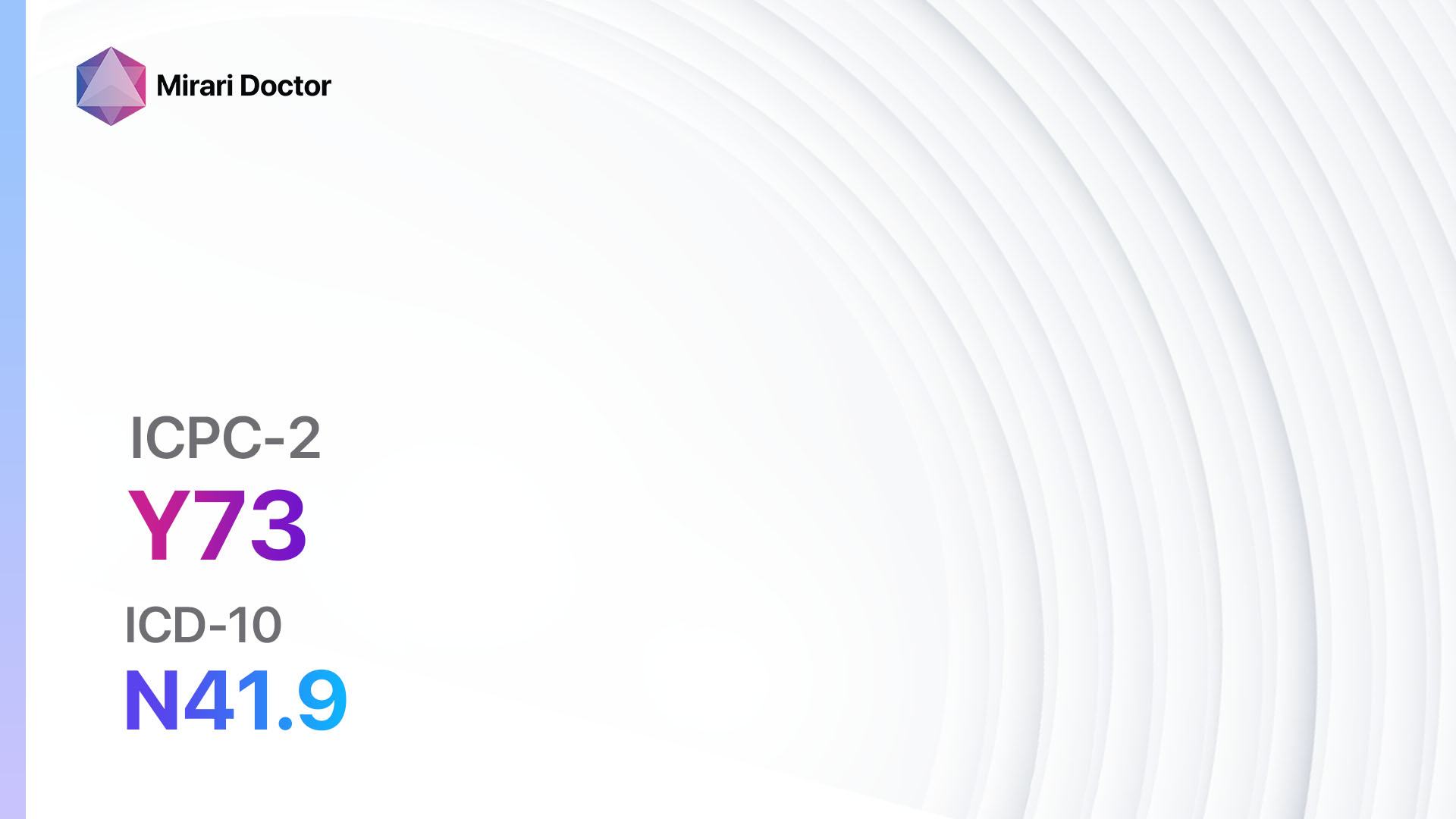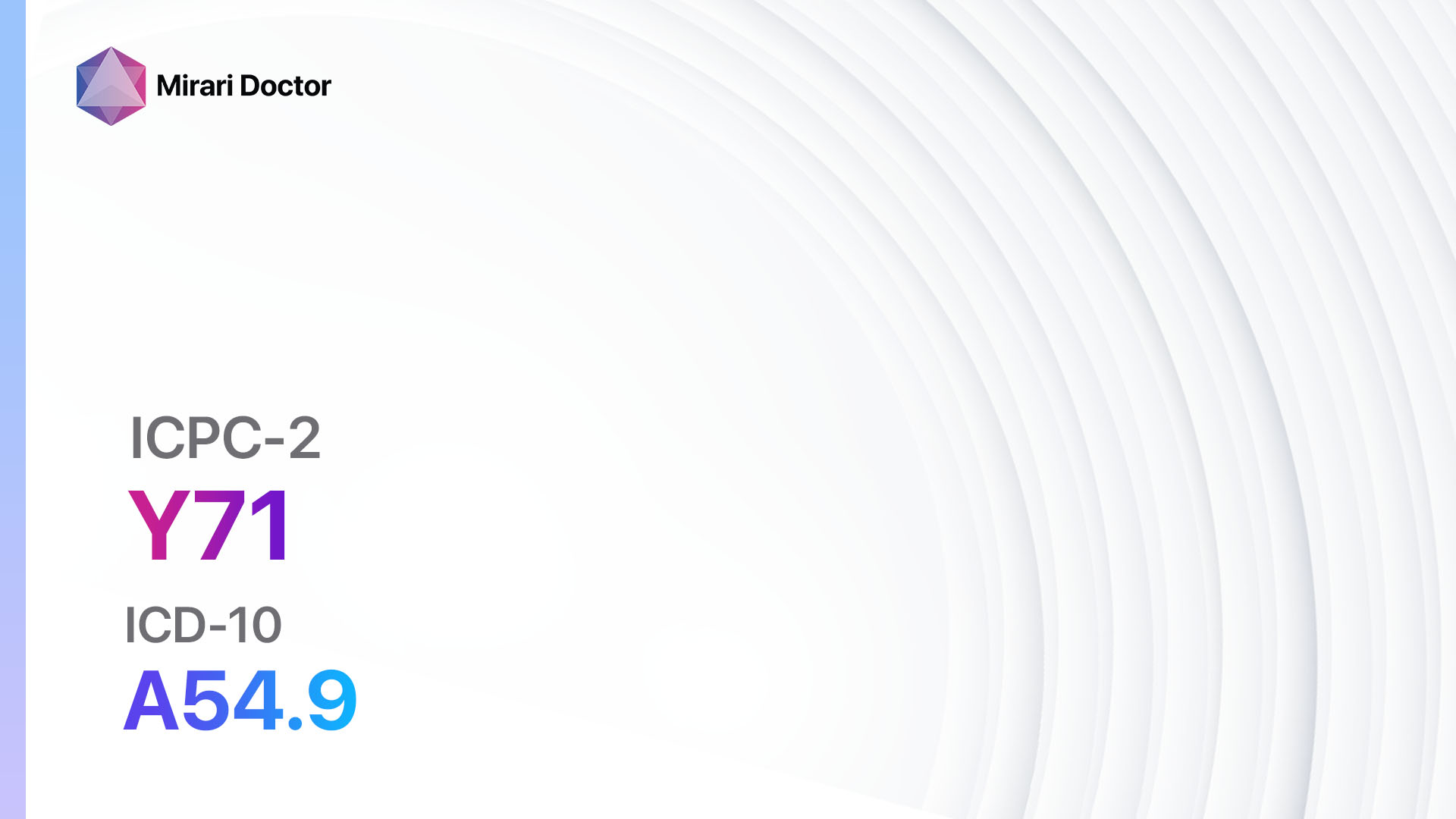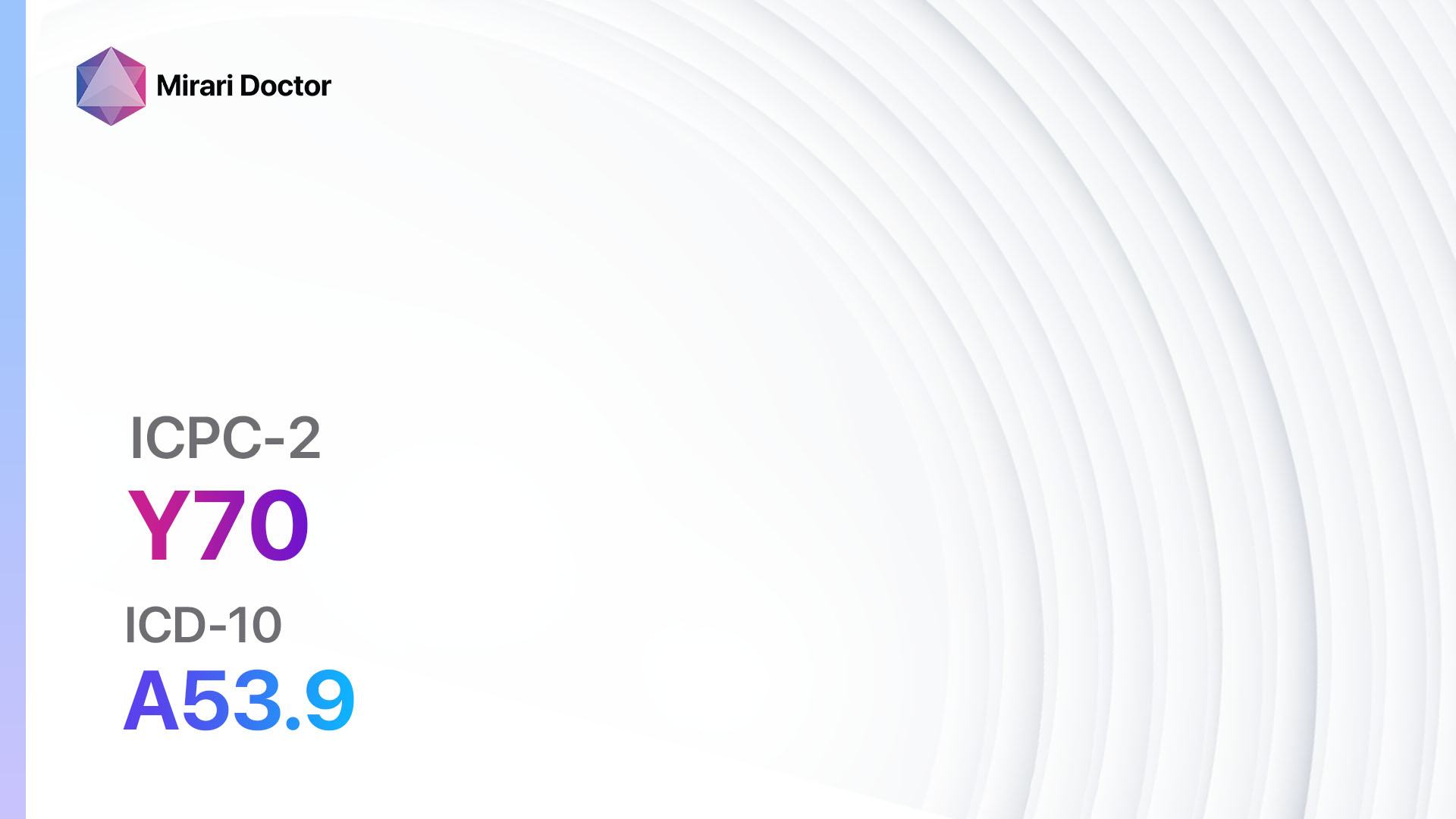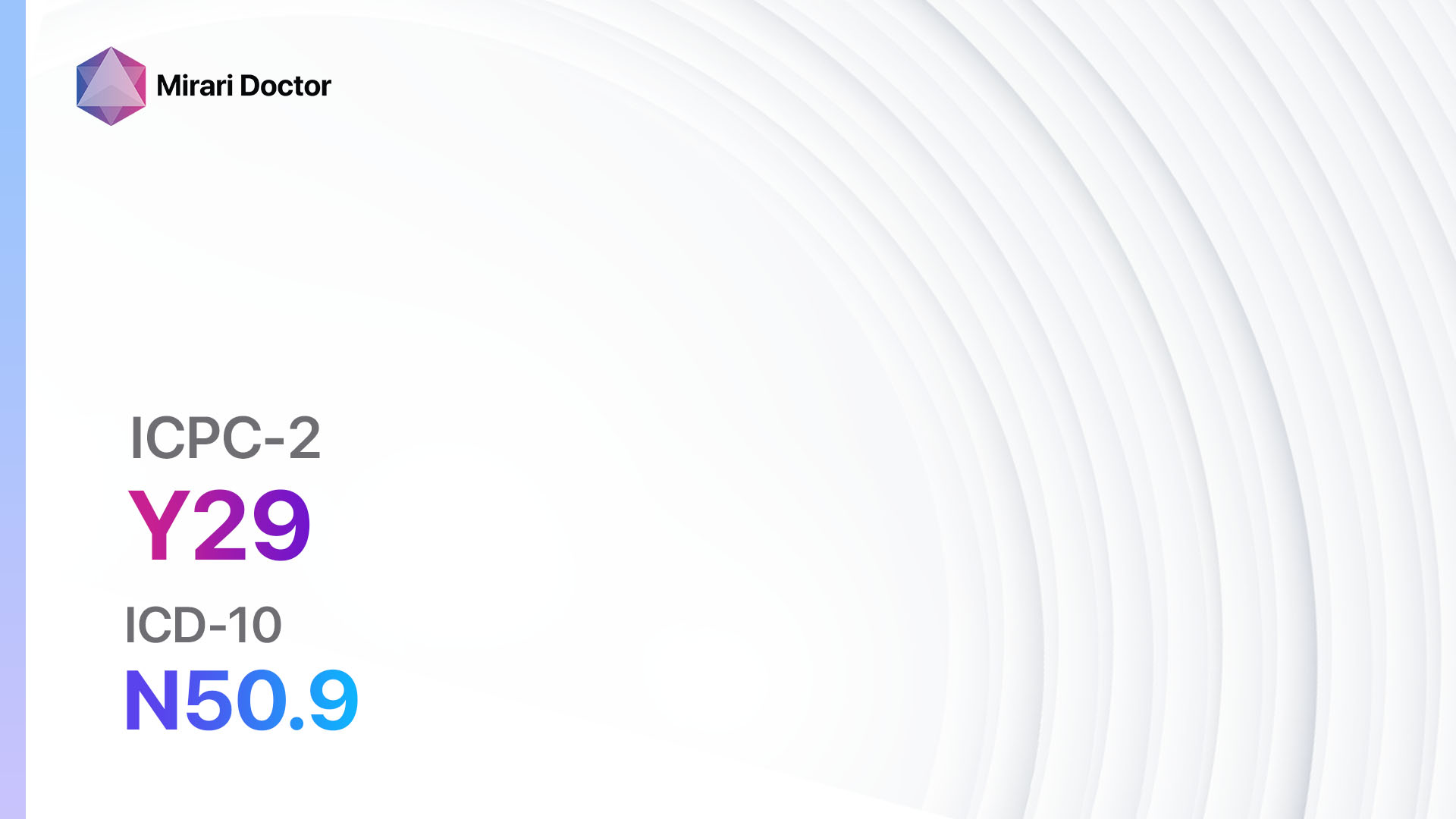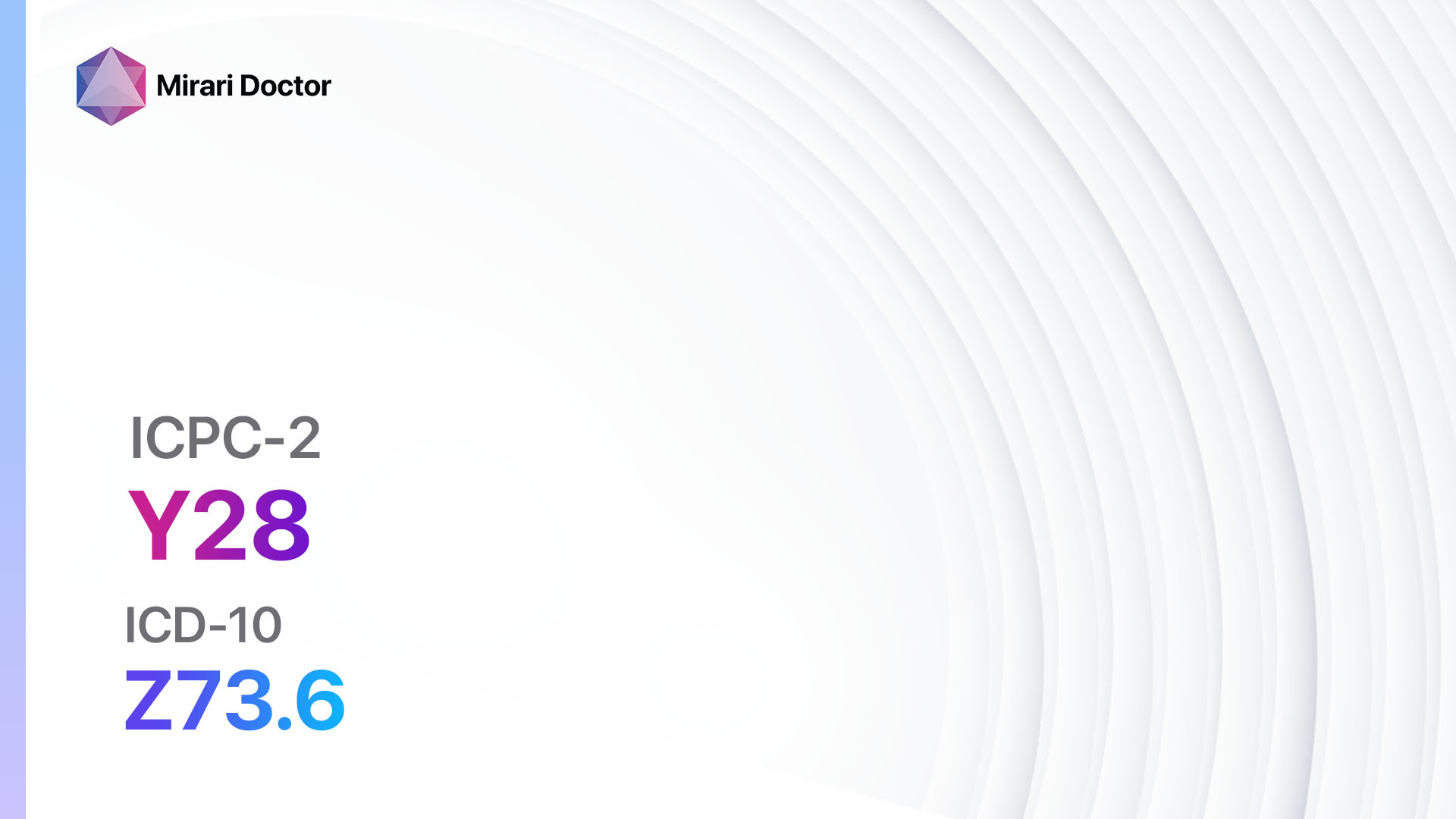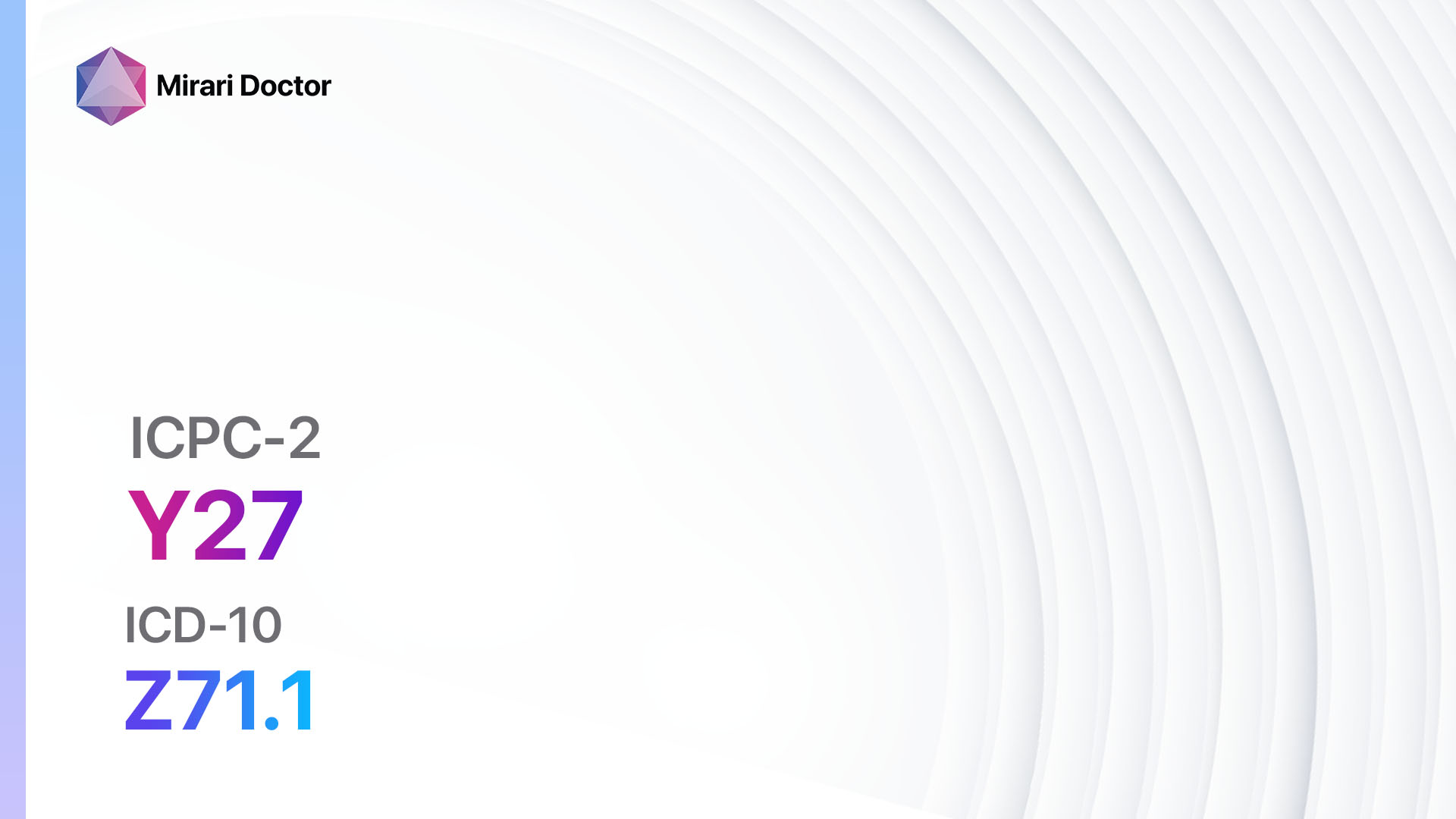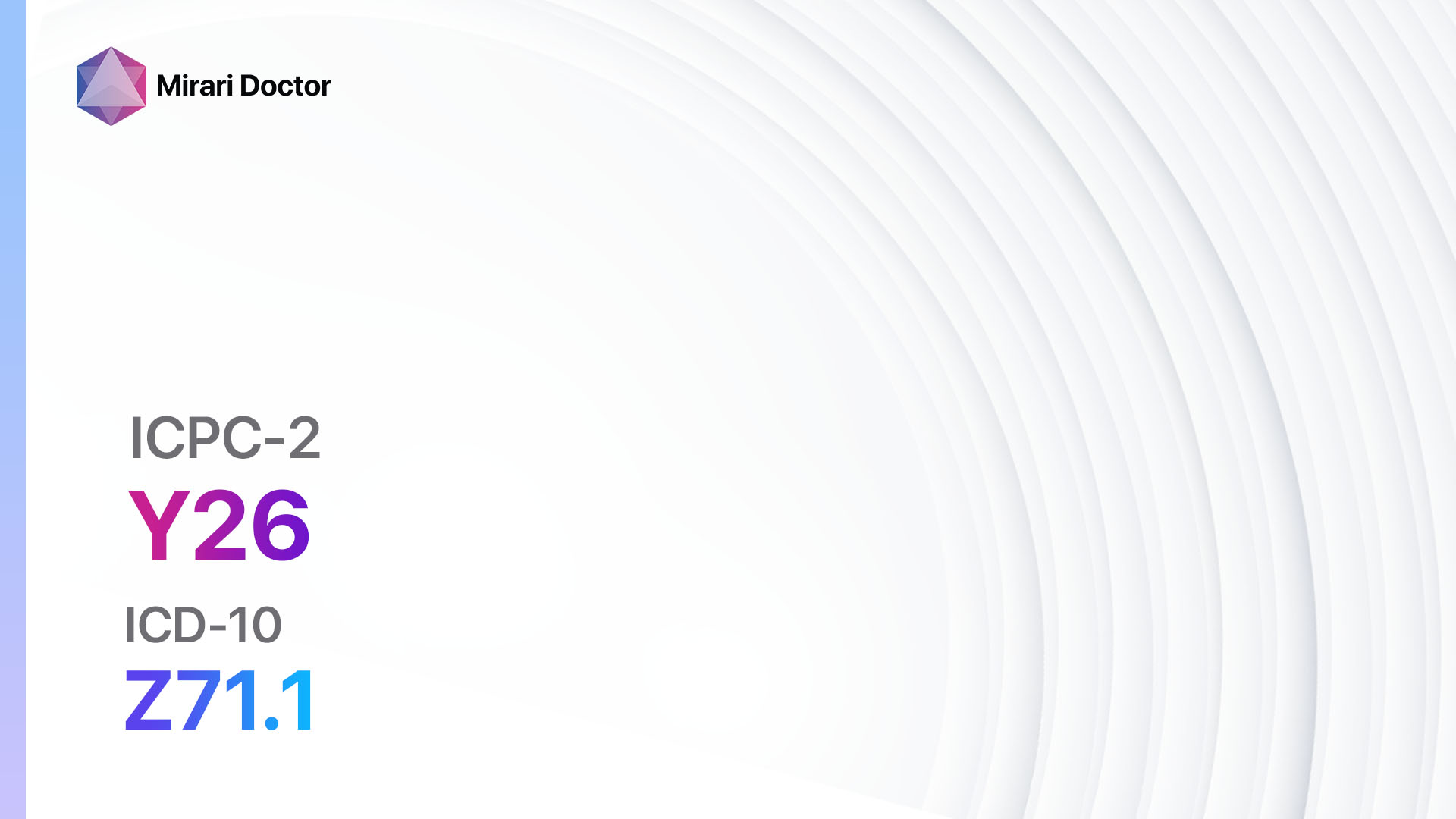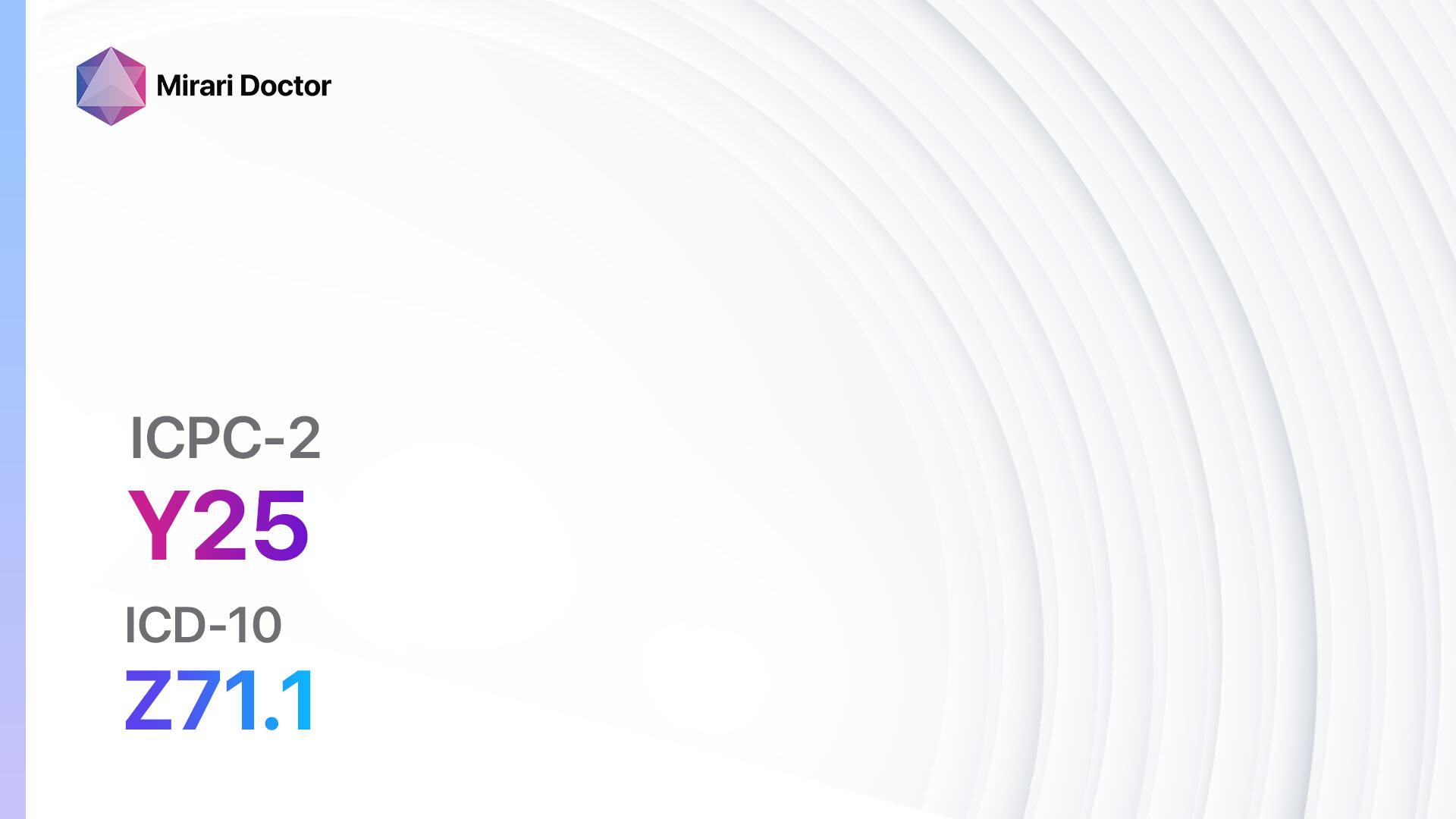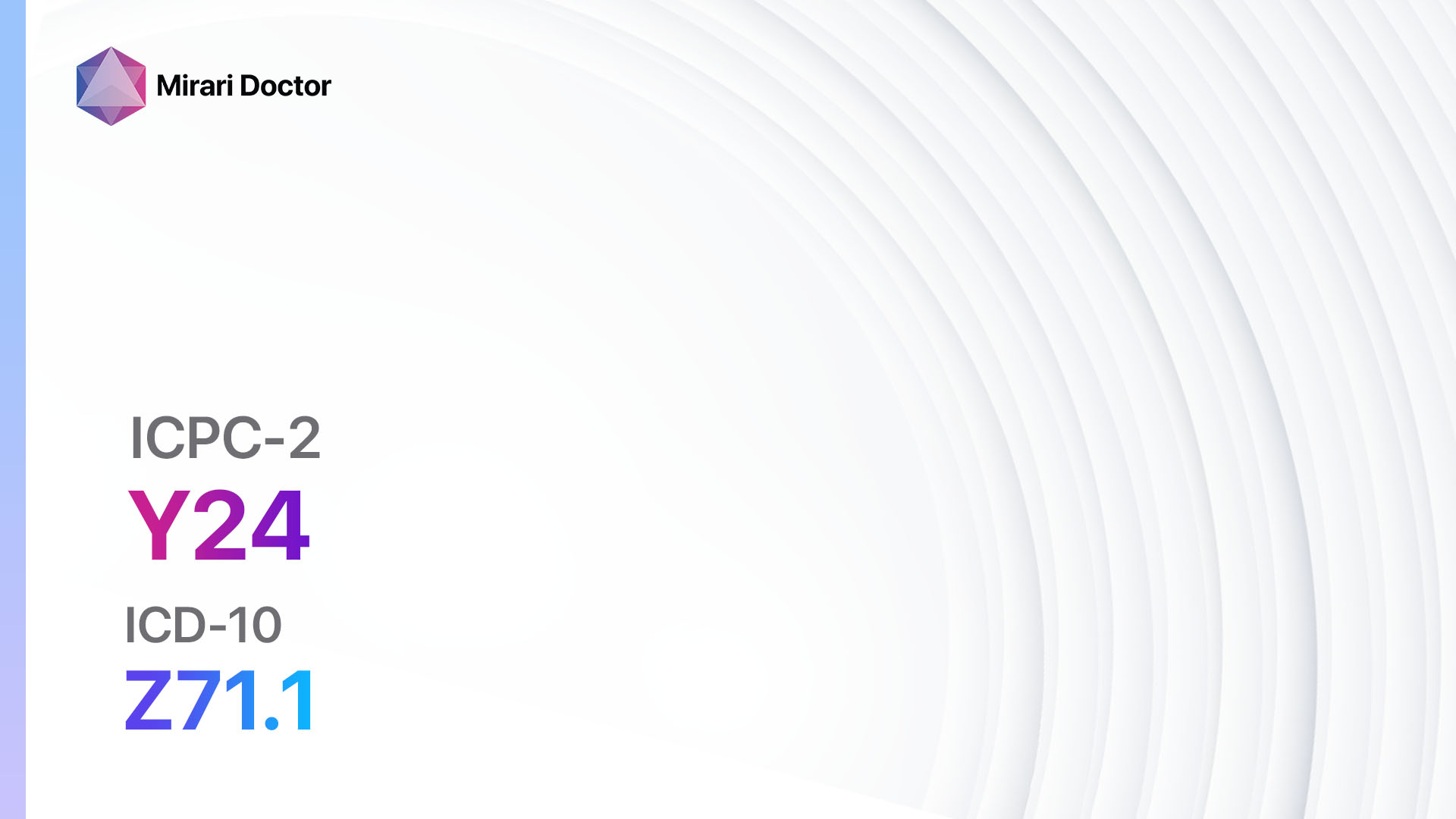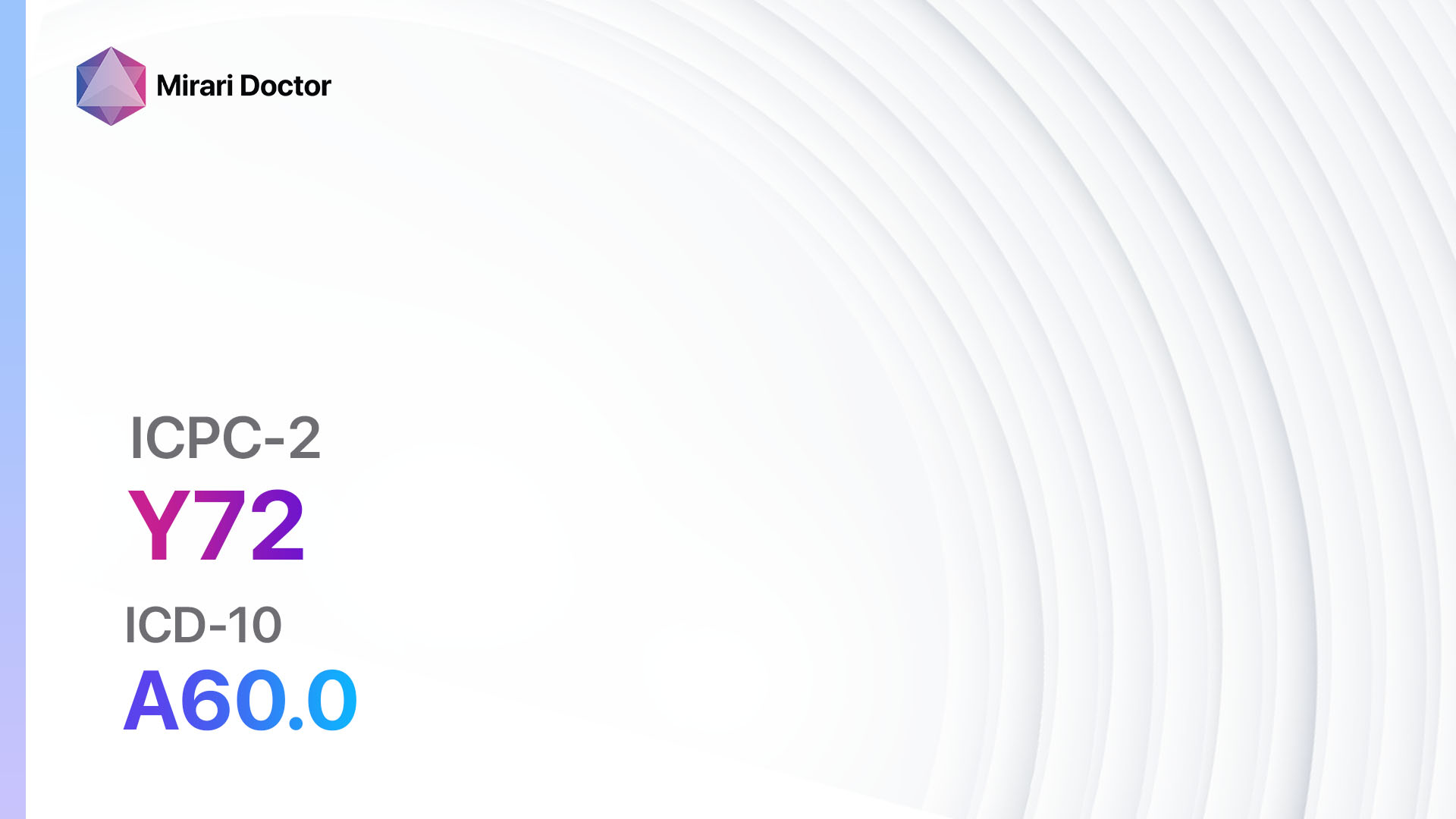
Introduction
Genital herpes is a sexually transmitted infection caused by the herpes simplex virus (HSV). It is a common condition that can cause painful genital sores and can have a significant impact on a person’s physical and emotional well-being[1]. The aim of this guide is to provide an overview of the symptoms, causes, diagnostic steps, possible interventions, and lifestyle recommendations for managing genital herpes in males.
Codes
- ICPC-2 Code: Y72 Genital herpes male
- ICD-10 Code: A60.0 Herpesviral infection of genitalia and urogenital tract
Symptoms
- Painful blisters or sores on the genital area
- Itching or tingling sensation before the appearance of blisters
- Flu-like symptoms such as fever, body aches, and swollen lymph nodes
- Pain or burning during urination
- Headaches and fatigue
- Recurrent outbreaks with varying severity and frequency[2]
Causes
- Herpes simplex virus type 2 (HSV-2) is the primary cause of genital herpes
- HSV-1, usually associated with oral herpes, can also cause genital herpes through oral-genital contact
- Transmission occurs through direct contact with an infected person’s genital area, including vaginal, anal, or oral sex
- The virus can be transmitted even when there are no visible symptoms or sores present[3]
Diagnostic Steps
Medical History
- Obtain a comprehensive medical history to understand the patient’s risk factors, sexual history, and previous outbreaks
- Assess any underlying medical conditions such as immunosuppression or other sexually transmitted infections that may impact the management of genital herpes[4]
Physical Examination
- Perform a thorough physical examination, including a visual inspection of the genital area for any visible sores or blisters
- Evaluate any associated symptoms such as swollen lymph nodes or flu-like symptoms[5]
Laboratory Tests
- Viral culture: Collect a sample from a fresh sore or blister to detect the presence of the herpes simplex virus
- Polymerase chain reaction (PCR) test: This test can detect the genetic material of the herpes virus and is highly accurate
- Blood tests: Serologic tests can determine the presence of HSV antibodies, which can help identify previous or asymptomatic infections[6]
Diagnostic Imaging
- Diagnostic imaging is not typically necessary for the diagnosis of genital herpes[7]
Other Tests
- No additional diagnostic tests are typically required for the diagnosis of genital partners[8]
Follow-up and Patient Education
- Schedule follow-up appointments to monitor the patient’s response to treatment and provide ongoing support
- Educate the patient about the nature of the disease, transmission methods, and strategies to prevent further transmission[9]
- Provide information about available treatment options and encourage open communication with sexual partners[10]
Possible Interventions
Traditional Interventions
Medications:
Top 5 drugs for Genital Herpes:
- Acyclovir:
- Cost: $10-$50 for a 30-day supply
- Contraindications: Hypersensitivity to acyclovir
- Side effects: Nausea, vomiting, headache
- Severe side effects: Allergic reactions, kidney problems
- Drug interactions: Probenecid, cimetidine
- Warning: Stay hydrated to prevent kidney problems
- Valacyclovir:
- Cost: $20-$100 for a 30-day supply
- Contraindications: Hypersensitivity to valacyclovir
- Side effects: Nausea, headache, dizziness
- Severe side effects: Allergic reactions, kidney problems
- Drug interactions: Probenecid, cimetidine
- Warning: Stay hydrated to prevent kidney problems
- Famciclovir:
- Cost: $20-$100 for a 30-day supply
- Contraindications: Hypersensitivity to famciclovir
- Side effects: Headache, nausea, diarrhea
- Severe side effects: Allergic reactions, liver problems
- Drug interactions: Probenecid, cimetidine
- Warning: Avoid alcohol during treatment
- Penciclovir (topical):
- Cost: $20-$50 for a tube
- Contraindications: Hypersensitivity to penciclovir
- Side effects: Burning or stinging sensation at the application site
- Severe side effects: Allergic reactions
- Drug interactions: Unknown
- Warning: Apply as directed and wash hands before and after application
- Docosanol (topical):
- Cost: $10-$20 for a tube
- Contraindications: Hypersensitivity to docosanol
- Side effects: None reported
- Severe side effects: None reported
- Drug interactions: Unknown
- Warning: Apply as directed and wash hands before and after application
Alternative Drugs:
- Lidocaine cream: Can help alleviate pain and discomfort associated with genital herpes sores. Cost: $10-$20 for a tube. – Antiviral ointments: Examples include vidarabine and trifluridine. These ointments can be used for ocular herpes infections. Cost: Varies depending on the specific product.
Surgical Procedures:
- There are no surgical procedures recommended for the treatment of genital herpes.
Alternative Interventions
- Lysine supplements: Lysine is an amino acid that may help reduce the frequency and severity of herpes outbreaks. Cost: $10-$20 for a month’s supply.
- Propolis: A natural resin produced by bees, propolis has antiviral properties and may help reduce the duration of herpes outbreaks. Cost: $10-$30 for a bottle.
- Tea tree oil: This essential oil has antiviral properties and can be applied topically to reduce the severity and duration of herpes outbreaks. Cost: $10-$20 for a bottle.
- Aloe vera gel: Aloe vera has soothing properties and may help alleviate discomfort associated with genital herpes sores. Cost: $5-$15 for a tube.
- Lemon balm cream: Lemon balm has antiviral properties and can be applied topically to reduce the duration and severity of herpes outbreaks. Cost: $10-$20 for a tube.
Lifestyle Interventions
- Avoid sexual activity during outbreaks: Abstaining from sexual activity during outbreaks can reduce the risk of transmitting the virus to a partner.
- Use condoms: Consistent and correct use of condoms can help reduce the risk of transmission.
- Practice good hygiene: Keeping the genital area clean and dry can help prevent secondary infections and promote healing.
- Manage stress: Stress can trigger herpes outbreaks, so practicing stress management techniques such as exercise, meditation, and relaxation exercises can be beneficial.
- Eat a balanced diet: A healthy diet rich in fruits, vegetables, and lean proteins can support the immune system and help prevent recurrent outbreaks.
It is important to note that the cost ranges provided are approximate and may vary depending on the location and availability of the interventions.
Mirari Cold Plasma Alternative Intervention
Understanding Mirari Cold Plasma
- Safe and Non-Invasive Treatment: Mirari Cold Plasma is a safe and non-invasive treatment option for various skin conditions. It does not require incisions, minimizing the risk of scarring, bleeding, or tissue damage.
- Efficient Extraction of Foreign Bodies: Mirari Cold Plasma facilitates the removal of foreign bodies from the skin by degrading and dissociating organic matter, allowing easier access and extraction.
- Pain Reduction and Comfort: Mirari Cold Plasma has a local analgesic effect, providing pain relief during the treatment, making it more comfortable for the patient.
- Reduced Risk of Infection: Mirari Cold Plasma has antimicrobial properties, effectively killing bacteria and reducing the risk of infection.
- Accelerated Healing and Minimal Scarring: Mirari Cold Plasma stimulates wound healing and tissue regeneration, reducing healing time and minimizing the formation of scars.
Mirari Cold Plasma Prescription
Video instructions for using Mirari Cold Plasma Device – Y72 Genital herpes male (ICD-10:A60.0)
| Mild | Moderate | Severe |
| Mode setting: 1 (Infection) Location: 0 (Localized) Morning: 15 minutes, Evening: 15 minutes |
Mode setting: 1 (Infection) Location: 0 (Localized) Morning: 30 minutes, Lunch: 30 minutes, Evening: 30 minutes |
Mode setting: 1 (Infection) Location: 0 (Localized) Morning: 30 minutes, Lunch: 30 minutes, Evening: 30 minutes |
| Mode setting: 2 (Wound Healing) Location: 0 (Localized) Morning: 15 minutes, Evening: 15 minutes |
Mode setting: 2 (Wound Healing) Location: 0 (Localized) Morning: 30 minutes, Lunch: 30 minutes, Evening: 30 minutes |
Mode setting: 2 (Wound Healing) Location: 0 (Localized) Morning: 30 minutes, Lunch: 30 minutes, Evening: 30 minutes |
| Mode setting: 5 (Prostatitis Therapy) Location: 2 (Prostate & Uterus) Morning: 15 minutes, Evening: 15 minutes |
Mode setting: 5 (Prostatitis Therapy) Location: 2 (Prostate & Uterus) Morning: 30 minutes, Lunch: 30 minutes, Evening: 30 minutes |
Mode setting: 5 (Prostatitis Therapy) Location: 2 (Prostate & Uterus) Morning: 30 minutes, Lunch: 30 minutes, Evening: 30 minutes |
| Mode setting: 7 (Immunotherapy) Location: 1 (Sacrum) Morning: 15 minutes, Evening: 15 minutes |
Mode setting: 7 (Immunotherapy) Location: 1 (Sacrum) Morning: 30 minutes, Lunch: 30 minutes, Evening: 30 minutes |
Mode setting: 7 (Immunotherapy) Location: 1 (Sacrum) Morning: 30 minutes, Lunch: 30 minutes, Evening: 30 minutes |
| Total Morning: 60 minutes approx. $10 USD, Evening: 60 minutes approx. $10 USD |
Total Morning: 120 minutes approx. $20 USD, Lunch: 120 minutes approx. $20 USD, Evening: 120 minutes approx. $20 USD, |
Total Morning: 120 minutes approx. $20 USD, Lunch: 120 minutes approx. $20 USD, Evening: 120 minutes approx. $20 USD, |
| Usual treatment for 7-60 days approx. $140 USD – $1200 USD | Usual treatment for 6-8 weeks approx. $2,520 USD – $3,360 USD |
Usual treatment for 3-6 months approx. $5,400 USD – $10,800 USD
|
 |
|
Use the Mirari Cold Plasma device to treat Genital herpes male effectively.
WARNING: MIRARI COLD PLASMA IS DESIGNED FOR THE HUMAN BODY WITHOUT ANY ARTIFICIAL OR THIRD PARTY PRODUCTS. USE OF OTHER PRODUCTS IN COMBINATION WITH MIRARI COLD PLASMA MAY CAUSE UNPREDICTABLE EFFECTS, HARM OR INJURY. PLEASE CONSULT A MEDICAL PROFESSIONAL BEFORE COMBINING ANY OTHER PRODUCTS WITH USE OF MIRARI.
Step 1: Cleanse the Skin
- Start by cleaning the affected area of the skin with a gentle cleanser or mild soap and water. Gently pat the area dry with a clean towel.
Step 2: Prepare the Mirari Cold Plasma device
- Ensure that the Mirari Cold Plasma device is fully charged or has fresh batteries as per the manufacturer’s instructions. Make sure the device is clean and in good working condition.
- Switch on the Mirari device using the power button or by following the specific instructions provided with the device.
- Some Mirari devices may have adjustable settings for intensity or treatment duration. Follow the manufacturer’s instructions to select the appropriate settings based on your needs and the recommended guidelines.
Step 3: Apply the Device
- Place the Mirari device in direct contact with the affected area of the skin. Gently glide or hold the device over the skin surface, ensuring even coverage of the area experiencing.
- Slowly move the Mirari device in a circular motion or follow a specific pattern as indicated in the user manual. This helps ensure thorough treatment coverage.
Step 4: Monitor and Assess:
- Keep track of your progress and evaluate the effectiveness of the Mirari device in managing your Genital herpes male. If you have any concerns or notice any adverse reactions, consult with your health care professional.
Note
This guide is for informational purposes only and should not replace the advice of a medical professional. Always consult with your healthcare provider or a qualified medical professional for personal advice, diagnosis, or treatment. Do not solely rely on the information presented here for decisions about your health. Use of this information is at your own risk. The authors of this guide, nor any associated entities or platforms, are not responsible for any potential adverse effects or outcomes based on the content.
Mirari Cold Plasma System Disclaimer
- Purpose: The Mirari Cold Plasma System is a Class 2 medical device designed for use by trained healthcare professionals. It is registered for use in Thailand and Vietnam. It is not intended for use outside of these locations.
- Informational Use: The content and information provided with the device are for educational and informational purposes only. They are not a substitute for professional medical advice or care.
- Variable Outcomes: While the device is approved for specific uses, individual outcomes can differ. We do not assert or guarantee specific medical outcomes.
- Consultation: Prior to utilizing the device or making decisions based on its content, it is essential to consult with a Certified Mirari Tele-Therapist and your medical healthcare provider regarding specific protocols.
- Liability: By using this device, users are acknowledging and accepting all potential risks. Neither the manufacturer nor the distributor will be held accountable for any adverse reactions, injuries, or damages stemming from its use.
- Geographical Availability: This device has received approval for designated purposes by the Thai and Vietnam FDA. As of now, outside of Thailand and Vietnam, the Mirari Cold Plasma System is not available for purchase or use.
References
- World Health Organization. (2022). Herpes simplex virus. Retrieved from https://www.who.int/news-room/fact-sheets/detail/herpes-simplex-virus
- Centers for Disease Control and Prevention. (2021). Genital Herpes – CDC Fact Sheet. Retrieved from https://www.cdc.gov/std/herpes/stdfact-herpes.htm
- Workowski, K. A., & Bolan, G. A. (2015). Sexually transmitted diseases treatment guidelines, 2015. MMWR Recommendations and Reports, 64(RR-03), 1-137.
- Gupta, R., Warren, T., & Wald, A. (2007). Genital herpes. The Lancet, 370(9605), 2127-2137.
- Corey, L., & Wald, A. (2009). Genital Herpes. In K. K. Holmes et al. (Eds.), Sexually Transmitted Diseases (4th ed., pp. 399-437). McGraw-Hill Medical.
- Wald, A., & Ashley-Morrow, R. (2002). Serological testing for herpes simplex virus (HSV)–1 and HSV-2 infection. Clinical Infectious Diseases, 35(Supplement_2), S173-S182.
- Patel, R., Alderson, S., Geretti, A., Nilsen, A., Foley, E., Lautenschlager, S., … & Radcliffe, K. (2011). European guideline for the management of genital herpes, 2010. International Journal of STD & AIDS, 22(1), 1-10.
- Mindel, A., & Marks, C. (2005). Psychological symptoms associated with genital herpes virus infections. CNS Drugs, 19(4), 303-312.
- Schiffer, J. T., & Corey, L. (2013). Rapid host immune response and viral dynamics in herpes simplex virus-2 infection. Nature Medicine, 19(3), 280-290.
- Johnston, C., & Corey, L. (2016). Current concepts for genital herpes simplex virus infection: diagnostics and pathogenesis of genital tract shedding. Clinical Microbiology Reviews, 29(1), 149-161.
Related articles
Made in USA


